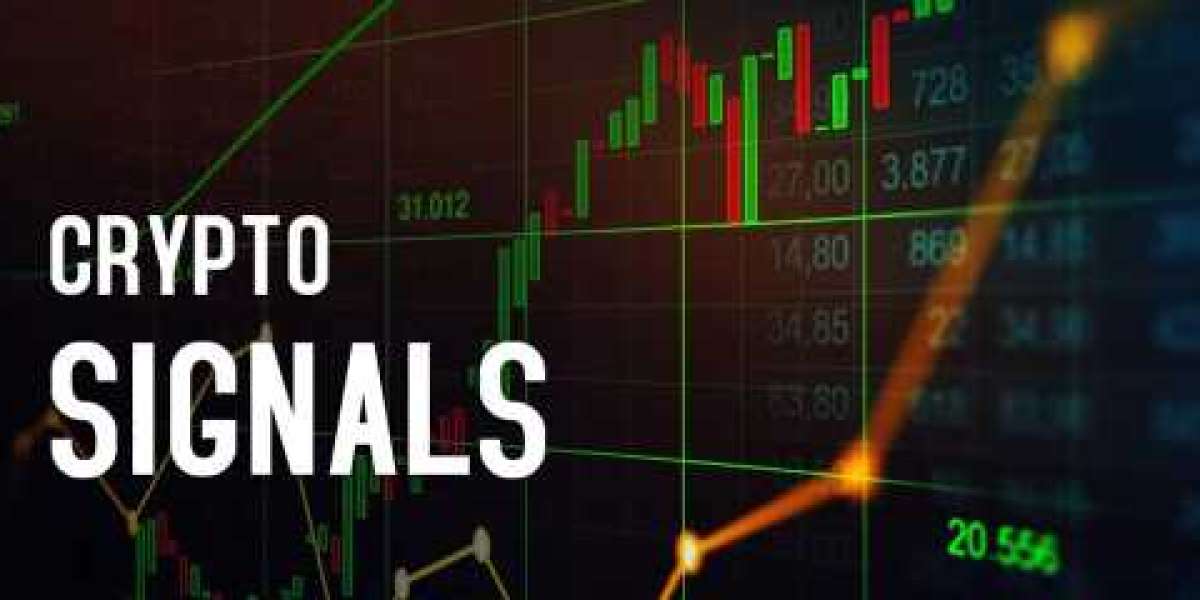Cryptocurrency trading has grown exponentially over the past decade, attracting both novice and experienced traders looking to profit from the volatile and dynamic digital currency markets. However, the complexity and fast-paced nature of crypto trading can be challenging to navigate. This is where Crypto Signals come into play—offering traders valuable insights and guidance on when to buy, sell, or hold specific cryptocurrencies.
What Are Crypto Signals?
Crypto signals are trade recommendations provided by experienced traders or automated algorithms, offering advice on the best times to enter or exit trades in the cryptocurrency market. These signals are usually based on a combination of technical analysis, market trends, and other relevant data, helping traders make informed decisions without needing to constantly monitor the market.
How Crypto Signals Work
Crypto signals typically include key information that helps traders execute trades. Here’s what a typical crypto signal might contain:
- Cryptocurrency Pair:
- The specific cryptocurrency pair to trade, such as BTC/USDT or ETH/BTC.
- Buy/Sell Recommendation:
- A clear indication of whether to buy, sell, or hold the cryptocurrency.
- Entry Price:
- The recommended price range at which to enter the trade.
- Take Profit (TP) Levels:
- Suggested price levels at which to take profits. There might be multiple TP levels depending on the trading strategy.
- Stop Loss (SL) Level:
- A predefined price level at which to exit the trade to minimize losses if the market moves against the trade.
- Additional Notes:
- Any additional information, such as market conditions, news events, or technical indicators that influenced the signal.
Types of Crypto Signals
There are different types of crypto signals available, catering to various trading styles and preferences:
- Manual Signals:
- These signals are generated by professional traders or analysts who manually analyze the market and share their insights with subscribers. Manual signals often come with explanations and reasoning behind the trade recommendations.
- Automated Signals:
- Automated signals are generated by algorithms or trading bots that use predefined criteria and technical indicators to identify trading opportunities. These signals can be faster and more frequent, as they are not subject to human emotions or biases.
- Free vs. Paid Signals:
- Some crypto signals are offered for free, often as a way to attract potential subscribers. Paid signals, on the other hand, usually come from reputable providers or groups that charge a subscription fee for access to their trade recommendations.
- Short-Term vs. Long-Term Signals:
- Depending on the trader’s strategy, signals can be geared towards short-term trading (scalping or day trading) or long-term investments (swing trading or HODLing).
Benefits of Using Crypto Signals
Using crypto signals can offer several advantages, especially for traders who are new to the market or those who don’t have the time to conduct their own analysis:
- Time-Saving:
- Crypto signals save traders time by providing them with ready-made trade ideas, eliminating the need for extensive market analysis.
- Expert Guidance:
- Traders can benefit from the expertise of seasoned analysts or sophisticated algorithms, gaining insights they might not have identified on their own.
- Risk Management:
- With predefined stop loss and take profit levels, crypto signals help traders manage their risk and protect their capital.
- Learning Opportunity:
- Following crypto signals can be educational for novice traders, as they can observe the decision-making process of more experienced traders and learn from it.
Risks and Considerations
While crypto signals can be valuable, it’s important to be aware of the risks and challenges associated with using them:
- Market Volatility:
- The cryptocurrency market is highly volatile, and even well-researched signals can result in losses due to sudden market shifts.
- Reliability of Signal Providers:
- Not all signal providers are trustworthy or accurate. It’s essential to vet providers and look for those with a proven track record and transparent practices.
- Over-Reliance:
- Relying solely on crypto signals without understanding the underlying market conditions can be risky. It’s important for traders to develop their own trading knowledge and skills over time.
- Subscription Costs:
- Paid signal services can be expensive, and there’s no guarantee of profitability. Traders should consider the cost versus potential returns and start with providers that offer trial periods or money-back guarantees.
Choosing the Right Crypto Signal Provider
Selecting a reputable crypto signal provider is crucial for success. Here are some factors to consider:
- Track Record:
- Look for providers with a consistent track record of successful trades and positive reviews from subscribers.
- Transparency:
- Providers should be transparent about their trading strategies, the rationale behind signals, and their past performance.
- Community and Support:
- A good signal provider often has an active community of traders and offers support through channels like Telegram, Discord, or email.
- Flexibility:
- Consider whether the provider offers signals that suit your trading style and time zone. Some providers specialize in specific markets or trading strategies.
Conclusion
Crypto signals can be a powerful tool for traders looking to navigate the complex and fast-moving world of cryptocurrency trading. They offer valuable insights, save time, and provide guidance that can help traders make more informed decisions. However, it’s important to approach crypto signals with caution, choosing reliable providers and using them as part of a broader trading strategy that includes proper risk management and continuous learning.








